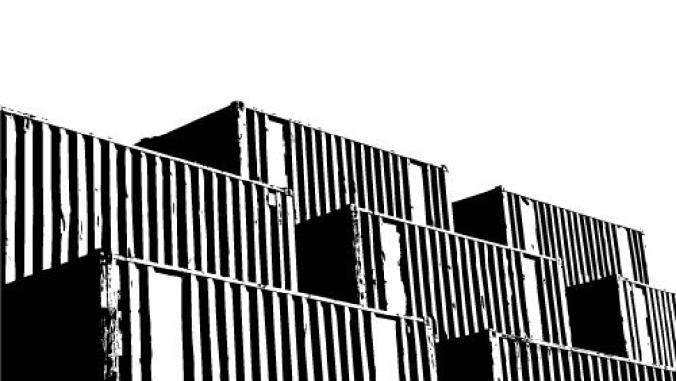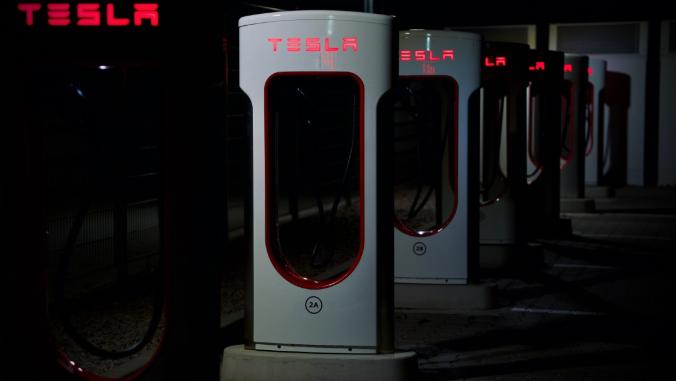The plans for Amazon’s second headquarters began five years ago as a fierce nationwide competition — pitting cities against each other to become the home of a glitzy new office complex.
The city that won out — Arlington, Virginia — became the site of Amazon’s HQ2, also known as Metropolitan Park, a new corporate campus the first phase of which opened in late May. And it’s boasting some serious achievements in sustainability.
"At HQ2, we challenged ourselves to push the limits of what’s possible when it comes to sustainable construction and design,” said Kara Hurst, vice president for worldwide sustainability at Amazon, in a company blog post.
The new facility has earned a LEED Platinum certification thanks to a long list of credentials that include renewable energy, water recycling and waste reduction.
"Amazon chose to pursue the highest level under the Green Building Program, and to set a new standard for sustainable design and integrating the corporate presence with the surrounding social and environmental landscapes," Paul Roman, green building manager at the Arlington County Department of Environmental Services, wrote in an email.
Going all in on electric energy
Met Park is powered by 100 percent renewable energy, sourced from a solar farm in Pittsylvania County, Virginia. Amazon is contracted to draw 82 megawatts of capacity from the 120 MW solar farm, according to Chris Roe, director of energy and sustainable operations for the company. "The remaining portion of energy generated by the solar farm was contracted by Arlington County and will provide clean energy for use in the region," Roe said in an email.
This solar energy is enough to power the entire office because the facility is completely electrified.
"Choosing to eliminate fossil fuels from the building's systems defines what kind of equipment can be used — this means no gas-fired boilers and more heat pumps," said Charlie Gronek, development manager for Amazon’s design and construction contractor Seneca Group, in an email. "These types of systems are very well suited to high-performance buildings like the two at Met Park, which are designed to limit heating needs, reducing energy demand and utility costs."
By using structural timber, we saw an opportunity to expand industry knowledge of the material in the region. Paving the way for its broader adoption in the future.
The all-electric facility also means no gas-fired cooking equipment. Amazon collaborated with a number of small businesses and contractors to transition the office’s restaurant and retail space with electric appliances to meet this goal.
According to Gina Klem, global real estate and facilities director of workplace and sustainability at Amazon, the company brought vendors to a kitchen that had electric cooking equipment side by side with gas cooking equipment where the teams could compare the two side-by-side and see that electric appliances are just as effective. And even with all these electrical upgrades, Arlington county doesn't foresee any grid issues.
Design choices with a sustainability mission
Mass timber construction—a building technique where wood is used as a major structural element, not simply as decoration — for the office’s meeting center was a design element that made a big impact for the sustainability of Met Park. While the wood creates a warm, inviting environment to the space according to Brian Earle, lead architect for Metropolitan Park at ZGF, the wood also absorbs carbon as it grows and continues to store that carbon throughout its material lifecycle in the building.
"By using structural timber, we saw an opportunity to expand industry knowledge of the material in the region," he said in an email. "Paving the way for its broader adoption in the future."

The timber beams in the meeting center add both carbon storage and a cozy ambiance. Image courtesy of Amazon.
Where the building uses concrete construction, Amazon used a low-carbon concrete — which mixes recycled carbon dioxide into fresh concrete — reduce the carbon footprint of the material by 20 percent.
Another aesthetic design choice with a secret sustainability benefit are the sun shades that adorn the exterior of the building. The buildings are clad with a series of colored fins and perforated metal panels that were placed strategically along the building’s sun exposure path to shade the facade.
Earle explained that these sunshades reduce the amount of low-angle sun that directly enters the building, reducing both glare and heat in the workplace. They also make what would otherwise be an unbroken expanse of glass much more visible to birds to help them from colliding with the building.
These sustainability design choices and construction features allowed Amazon to construct a larger building on the lot than is typical because of Arlington's Green Building Incentive Program that rewards developers for making greener choices with increased capacity for construction. According to Arlington County, Amazon is at the fourth highest level for sustainable features and the corresponding building size.
Amazon HQ2 stands apart in leading sustainable design in Arlington County and likely beyond," Roman wrote in an email. "There is a great deal in the design of Amazon HQ2 that is promising from the perspective of environmental and social responsibility. The county’s green building staff anticipates that, when fully built, the environmental and social performance of the complex will fulfill this promise."
Not overlooking the waste streams
Met Park will also be capturing and recycling an impressive amount of water. The offices are designed to reuse rainwater, shower water and HVAC condensate — recycling up to 7.5 million gallons of water annually, according to Klem. This is done with rooftop collection tanks and an extensive greywater system.
And while all of these design choices make Amazon’s HQ2 a sustainable building for the future, the company did not overlook the construction process itself. By sorting construction waste on-site, Amazon diverted 82 percent of it from landfills and sent much of it to recycling centers.
In total, these techniques act as something of a proving ground for Amazon’s other facilities around the country. The company is aiming to power 100 percent of operations with renewable energy by 2025; it has started to use some of the construction and waste processes at other locations.
"While it’s not always necessarily visible to our customers or communities, we’re working to decarbonize all of Amazon’s buildings — including our corporate offices, data centers and fulfillment facilities," said Hurst, Amazon’s vice president for worldwide sustainability.







